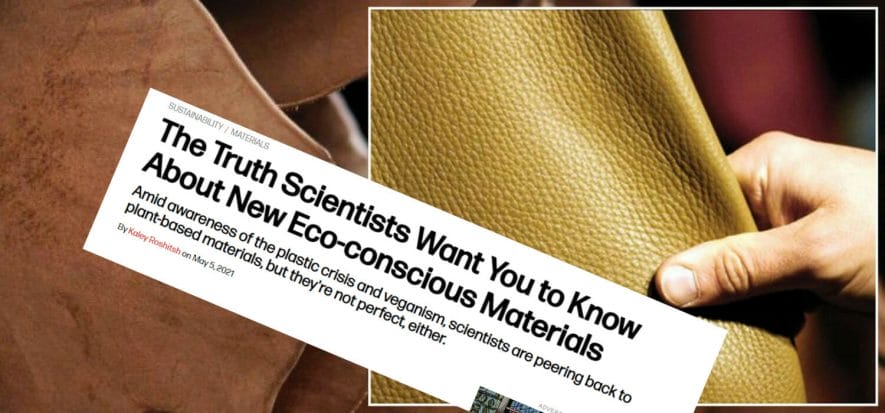“Even if we talk more and more about bio-based materials, it must be said that these are not intrinsically new, nor ecological”. Finally. WWD, the international newspaper interested in the fashion business, asks two questions about vegan alternatives that are encountering so much luck these days. First of all, the newspaper is keen to remember that they are not really that innovative. Although to be successful they have to cloak a sense of novelty, as early as 5,000 years ago Ötzi‘s clothing involved a mix of materials of animal and plant origin. But, even more, WWD recalls that even the alleged greater sustainability of veg alternatives is, precisely, only presumed.
WWD asks two questions
Two impulses go through the materials market. First of all, “mitigate the plastic crisis and arrive to an efficient use of raw materials”. Then, it offer answers to the new audience of “vegan consumers”. Engineers go wild in the search for bio-based solutions, but, as WWD notes, “not even plant-based materials are perfect: vegan does not mean sustainable or biodegradable”.
FILK’s answers
The range of products that WWD deals with is one that anyone who reads La Conceria knows well. “Once they are processed to look like leather, it is understood that Vegea, Desserto and Piñatex also achieve its performance. But according to the FILK Institute study, this is not the case in terms of tensile and tear strength, flexibility, water absorption and the undue presence of harmful chemicals”. Precisely in this regard, WWD recalls how the FILK study found “synthetic materials” in new fabrics together with “substances subject to limitation such as butanone oxime”. In short, the matrix will be bio-based, but there is not only that.
Between marketing and science
Brands and consumers would like “materials to be futuristic and completely innovative – explains Theanne Schiros, researcher at the Fashion Institute of Technology in New York – to WWD. But a competition where suggestive names prevail over truth, or where the hype about how wonderful a product is, is a disservice to true innovation”. There are many open questions: the use of plastics, biodegradability and carbon footprint, especially imagining the scenario in which these materials are not manufactured for niche markets, but on a mass scale.
The counter-intuitive value of leather
Furthermore, the problem of sustainability arises in a holistic sense. “Science is the most powerful problem solving tool we have – concludes Daniel Natusch, conservation expert and member of IUCN -. Science has shown, perhaps counterintuitively, that designer brands play an important role in the conservation of reptile species and their habitats. Ignoring science risks jeopardising the successful management systems that exist around the world”. In short, eliminating animal materials from fashion would not do nature a good service.
Read also:










